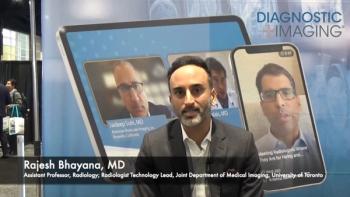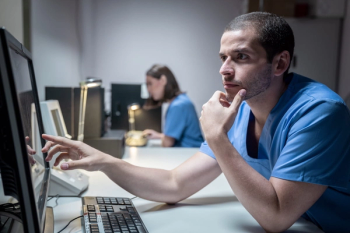
NIH chief foresees critical need for musculoskeletal radiologists
As baby boomers survive heart conditions and malignant tumors, and limp into old age with fragile bones and creaky joints, musculoskeletal radiologists can expect a major increase in workload.Radiology researchers should invest in understanding
As baby boomers survive heart conditions and malignant tumors, and limp into old age with fragile bones and creaky joints, musculoskeletal radiologists can expect a major increase in workload.
Radiology researchers should invest in understanding arthritis and musculoskeletal conditions, the number one cause of chronic disability and reduced quality of life in the over-65 generation, according to Dr. Elias Zerhouni, executive director of the National Institutes of Health.
Enormous advances in the treatment of acute illness and trauma over the past 40 years have caused a shift in healthcare toward the management of chronic disease, Zerhouni said during his keynote lecture at the August annual meeting of the International Society for Strategic Studies in Radiology in Paris. Practitioners are treating an increasingly elderly collection of patients, who are placing considerable strain on healthcare resources.
"There is a tremendous challenge facing us as researchers and policy makers. When you look at the aging of the population curve, you see that this is tracked by the curve of health expenditure over time," he said. "This has implications on the research that radiology should be doing."
Academic radiologists should look ahead to the major healthcare issues that will be troubling future patient cohorts, Zerhouni said. He listed these in order of priority:
· arthritis/musculoskeletal disease
· heart disease
· loss of hearing/vision
· joint injuries/bone fractures
· diabetes
· mental illness
"If you combine numbers one and four in this list, you have a huge need for managing and understanding musculoskeletal disease and disability," he said. "We need to invest significantly in arthritis and musculoskeletal conditions."
Healthcare professionals have already made good progress in tackling cardiac and cardiovascular complaints, in particular by reducing mortality from stroke, Zerhouni said. He described the emergence of obesity in developed countries, however, as frightening. Statistics show the rate of obesity to be doubling in the U.S., almost certainly accelerating the number of diabetes cases.
Dr. Alexander Margulis, an assistant professor of radiology at Cornell University's Weill Medical College, shares the view that the shift in population demographics has important implications for healthcare spending plans. In 2001, just 13% of U.S. citizens were aged 65 or over. Yet this group accounted for 40% of diagnostic imaging procedures and costs, he said during his opening lecture at the ISSSR meeting.
"In the U.S., we are spending 14.6% of GDP on healthcare, and it is only going to go up," he said.
Newsletter
Stay at the forefront of radiology with the Diagnostic Imaging newsletter, delivering the latest news, clinical insights, and imaging advancements for today’s radiologists.




























